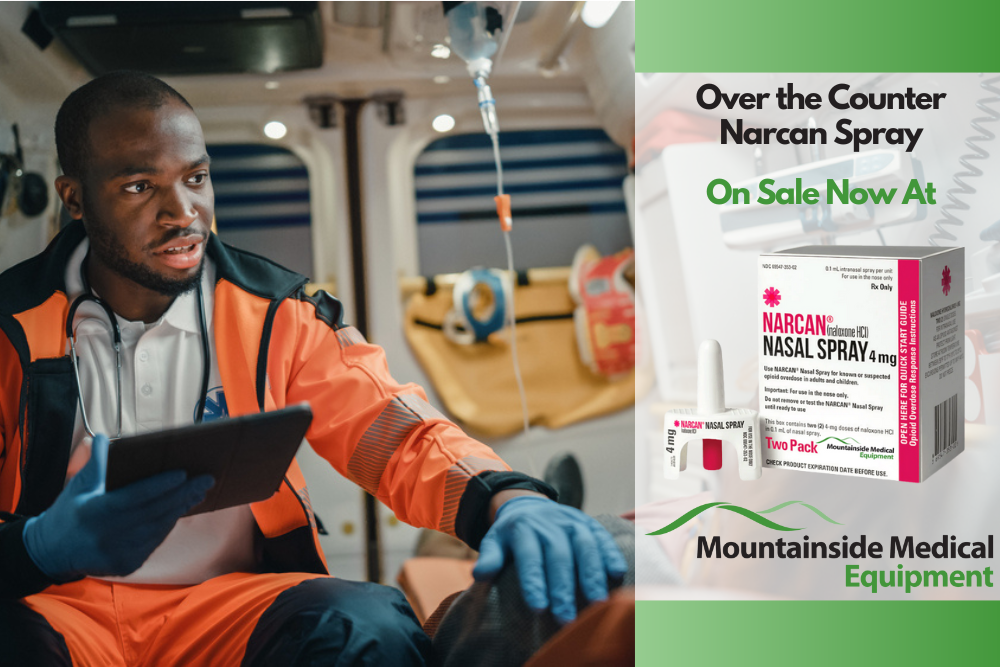on US orders over $100
on all US orders over $100

The opioid epidemic that has reached crisis proportions in the United States was caused by an unprecedented rise in the misuse of prescription opioid painkillers. But what constitutes misuse? How did we get to the point where legally-prescribed medications caused an epidemic of addition and overdoses? And how do we stop the public health crisis of opioid painkillers? Read on to learn how Narcan works to reverse opioid overdoes and save lives, and why you should make it part of your home safety plan!
Opioids are a class of drugs that relax the body and relieve pain. They're naturally found in the opium poppy plant, but some prescription opioids are made from the chemical structure of the plant without using the plant itself. Prescription opioids are used mostly to manage moderate to severe pain, but are extremely addictive.
One of the main reasons for this addiction is that dopamine is released during opioid use: this hormone helps regulate reward-motivated behavior, the part of us that creates motivation by determining the desirability of a action's outcome. So opioids not only increase pleasure and relaxation, they also release the hormone that motivates you to keep trying to achieve that same pleasurable outcome.
While all forms of opioid abuse have risen in the past two decades, of concern in this article is largely the misuse of prescription opioids and their addictive qualities. Heroin, derived from opium, is also incredibly dangerous and addictive, and its rise in prominence is heavily connected to escalation from prescription opioid addictions, but it's also highly illegal. The opioids we're discussing are legally prescribed, and addictions to them often begin while people are recovering from injury or surgery, as well as suffering from chronic pain. They're even prescribed in long-term care settings like nursing homes.
Prescription opioids include:
Opioids can make you feel relaxed and happy, but come with a host of potential, short-term side effects too, such as drowsiness, confusion, nausea, constipation, and slowed breathing. The effects of slowed breathing are particularly worrying, as this can cause hypoxia, a condition in which too little oxygen reaches the brain, possibly leading to comas, permanent brain damage, and death. This is one of the primary reasons for opioid-based overdose.
You can also easily build up a tolerance to prescription opioids, leading to requiring more of them for the same amount of pain relief, as well as misusing them for increased effect. This can also dovetail with withdrawal symptoms as an addiction forms, and these uncomfortable, painful symptoms are one of the reasons people find it difficult to stop opioid use.

Opioid misuse isn't just taking a prescription opioid for the high it provides. That's a common reason, but it also might involve taking someone else's prescription medication, or taking the medication in a way or dose other than prescribed. Sometimes this means altering the format or delivery of the medication, and sometimes it means taking more than prescribed.
The numbers surrounded the opioid epidemic display an unprecedented rise in the use of opioids as well as deaths from them:
The most concerning statistic might be a comparison over a longer timeline: the number of drug overdose deaths was four times higher in 2018 than in 1999, and nearly 70 percent of overdose deaths each year now involve opioids.

The opioid epidemic is a problem that has been building since increased prescribing of opioids in the late 1990s, spurred by new developments in opioid pain relievers, particularly the approval of OxyContin in 1995. Since 1999, the quantity of prescription painkillers sold in the United States has nearly quadrupled as well as the quantity of prescriptions written, with a corresponding increase in addiction rates.
It's important to recognize that addiction to opioid pain relievers can happen to anyone who uses them, even in a medical setting. As many as 1 in 4 (25 percent) patients receiving long-term opioid therapy in a primary care setting struggles with addiction.

Naloxone, distributed under the brand name Narcan, is an opioid antagonist, which means it binds to opioid receptors in the central nervous system, where it reverses and blocks the effects of opioids. This can quickly reverse an opioid overdose and restore normal breathing. It's a safe medication without evidence of significant adverse reactions, and has no harmful effect on a person without opioids in their system. Most importantly, data shows that naloxone availability helps save lives:
It's crucial that the best emergency supplies are widely available, not just to professionals, but to everyone. That's why Mountainside Medical Equipment offers the best rescue supplies for your home, office, school, organization, or any other venue. Visit us today!
Using Narcan is even easier when you have a dedicated naloxone kit, like Mountainside Medical Equipment's Narcan Nasal Spray Kit. These all-inclusive kits have everything you need to stop an overdose, provided in a convenient and highly visible carrying case to save time when you need it most.
Leave a comment